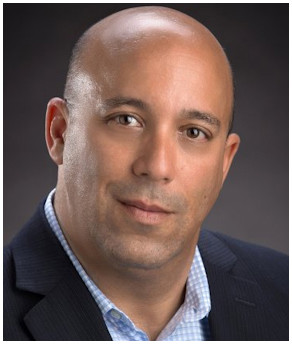When Diagnostic Errors Cause Harm

Diagnosis is the process by which physicians determine the underlying cause of a patient’s physical signs and symptoms. Proper diagnosis leads to proper treatment. Without a formal diagnosis, patients generally cannot be prescribed appropriate medication, permitted to schedule a surgical intervention, or otherwise undergo treatments designed to help cure or manage their medical problems.
When a physician arrives at a correct diagnosis promptly, patients can be proactive about their response to the situation. When the diagnostic process is delayed or riddled with errors, severe and even fatal harm can result.
How Common Are Diagnostic Errors?
In 2016, a study conducted by researchers from the Johns Hopkins University School of Medicine was released to the public. This study revealed that medical errors are merely prevalent; they are the third-leading cause of death in the U.S., behind only heart disease and cancer (and more recently, COVID). Although this study did not specifically illuminate how common diagnostic errors either occur or lead to catastrophic consequences, it’s clear that the medical community, media, and the public alike have gained a greater understanding on that score since this consequential study was published.
For example, a subsequent Harvard Medical Practice Study revealed that diagnostic error accounts for approximately 17% of preventable medical errors in patients who have been hospitalized. Other conservative and widespread estimates indicate that a minimum of 5% of outpatients (non-hospitalized patients) are affected by diagnosis errors.
Most recently, Johns Hopkins University School of Medicine researchers again uncovered a shocking reality. Diagnosis errors made in emergency departments alone result in approximately 370,000 deaths and permanent disabilities each year, in addition to 2.6 million instances of non-fatal harm, resulting from 7.4 million diagnostic errors every year.
The public should pay attention to these ground-breaking studies. It can be challenging to advocate for oneself under the best of circumstances. Confronting the reality that medical professionals are wrong so often – and at such a profound cost – can be a daunting prospect. Yet, if patients are to prevent harm (when possible) and seek legal guidance in the wake of a harmful mistake (whenever appropriate), they need to understand just how common diagnosis errors are.
Delayed Diagnosis
Sometimes, a patient’s care team arrives at a correct diagnosis, but they do so much later than they should have for one reason or another. Delayed diagnosis scenarios often result in the progression or aggravation of a condition that could have been prevented had the correct diagnosis been identified earlier in the patient care process. Depending on the severity of the condition in question and the rate at which that condition has progressed, a diagnostic delay can have catastrophic – and even fatal – consequences. A common example is the diagnosis of cancer after it has already spread throughout the body, instead of at a time when it is confined to one small area.
Misdiagnosis
When a patient is incorrectly diagnosed with a particular condition, this situation is referred to as a misdiagnosis. Sometimes patients are diagnosed with a condition when nothing is wrong with them. For example, if a benign cyst is identified on a mammogram as a tumor and the affected patient undergoes surgery for a harmless cyst, this is a misdiagnosis.
A misdiagnosis may also involve diagnosing a patient with the wrong condition. For example, if a patient has mesothelioma and doesn’t know it, they may seek care for coughing and trouble breathing. If a pulmonologist doesn’t perform proper diagnostic tests, the patient may be incorrectly diagnosed with a lung infection or asthma.
In the above example, the patient may ultimately receive a correct, delayed mesothelioma diagnosis. However, the delay caused by the misdiagnosis could cause the patient to miss out on valuable time when they could have sought treatment for their mesothelioma proactively and gained a more favorable timeline for the progression of their disease. Misdiagnosis is not the only reason that delayed diagnosis scenarios unfold, but it is one of the most common causes of delayed diagnosis.
Missed Diagnosis
A missed diagnosis is different from a misdiagnosis. A misdiagnosis assumes that a patient has been diagnosed with a condition that is not the correct underlying cause of their symptoms. A missed diagnosis involves dismissing the idea that there is anything whatsoever wrong with a patient.
For example, in a misdiagnosis scenario, a patient with chest pain could be incorrectly diagnosed with a pulled muscle in the chest wall when they are suffering a heart attack. In a missed diagnosis scenario, a patient presenting with atypical chest discomfort “in the wrong place” (compared with so-called “textbook cases”) for a heart attack could be told that everyone experiences chest pain at some point and sent home with no diagnosis at all.
It is a well-documented reality that women and individuals of color suffer greater rates of harm due to missed diagnosis scenarios than white males do. There is too often a sense that it is acceptable to tell certain people that their symptoms are “all in their head” when it is virtually never appropriate to tell anyone seeking care that they must be imagining whatever is happening to their bodies.
Connect With A Skilled Ohio Medical Malpractice Lawyer For More Information
If you suspect a diagnostic error has caused you or a loved one harm, connect with the knowledgeable legal team at The Eisen Law Firm for assistance. While it is true that everyone – including physicians – makes mistakes, the inevitability of human fallibility isn’t a reality you must simply accept. If a physician, facility, or other healthcare provider has caused you harm due to subpar care, it is possible to seek legal and financial justice for your situation.
The lawyers at our firm are passionate about ensuring that innocent patients aren’t burdened by costs that should rightfully be paid by those who have caused them harm. Contact us today at 216-687-0900 or fill out our firm’s online contact form to schedule a free initial consultation with one of our compassionate, client-focused attorneys to tell us about your situation and to learn more about how we can help. We look forward to speaking with you.




